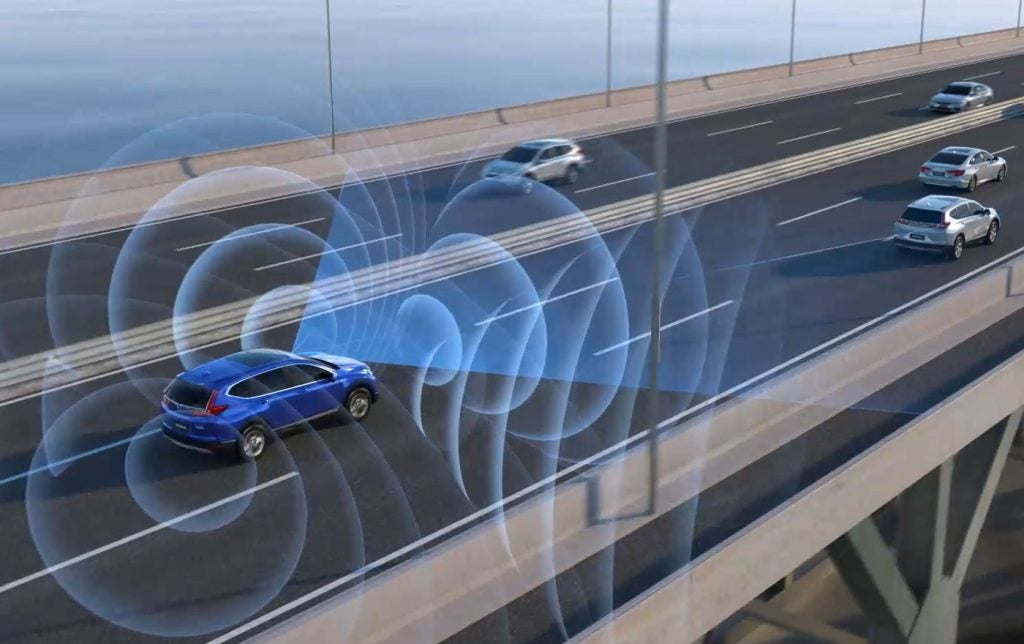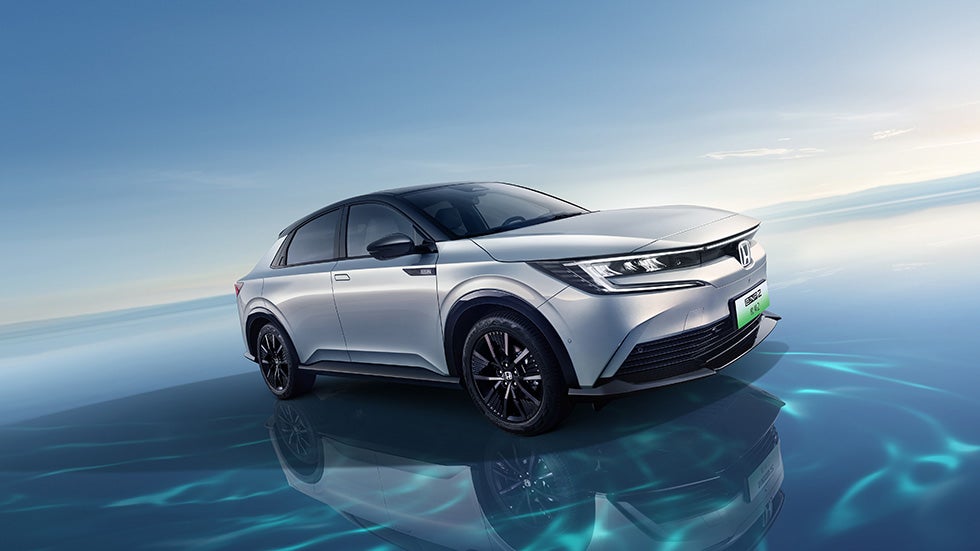After the usual preamble, ‘prototype’ photos and news of a new diesel engine, Honda Europe has finally revealed the Swindon, UK-built CR-V, little changed from the US version apart from some detail exterior mods, power tailgate, obligatory diesel engine option and improved cabin materials.
The fourth generation model will now offer a choice of two- or four-wheel drive on the 2.0 i-VTEC model, while improvements to the petrol and 2.2 i-DTEC diesel engines have achieved a claimed significant reduction in carbon dioxide emissions. The new line will reach showrooms in October.
The European model has a different front bumper, front LED daytime running lights and rear LED lights.
A keyless entry system is now available and the available power tailgate is a European market exclusive we wouldn’t mind betting Honda US, and other markets, soon demands as well.
Honda said: “The [interior] materials used have been carefully chosen for the European market.” We read that as ‘improved’ as European buyers are fussy about cabins and note also that the US market’s fake wood has apparently been banished.
The automaker also stresses a significant reduction in the engine and road noise entering the cabin with insulation material applied to the floorpan below the passenger compartment, rear door, rear wheel arches, door frames, front bulkhead and bonnet. The doors now also feature a double seal. The net result is a 3dB reduction in cabin noise compared to the outgoing CR-V.
How well do you really know your competitors?
Access the most comprehensive Company Profiles on the market, powered by GlobalData. Save hours of research. Gain competitive edge.

Thank you!
Your download email will arrive shortly
Not ready to buy yet? Download a free sample
We are confident about the unique quality of our Company Profiles. However, we want you to make the most beneficial decision for your business, so we offer a free sample that you can download by submitting the below form
By GlobalDataWhile US buyers get a 2.4-litre I4 petrol engine and five-speed automatic transmission with the choice of two- or four-wheel drive and three trim levels, the European versions initially will carry over the outgoing generation’s powertrains – two-litre ‘VTEC’ petrol and 2.2-litre ‘DTEC’ turbodiesel engines with standard six-speed manual and optional six- (petrol) or five-speed (diesel) automatic transmissions. Diesels have standard four-wheel drive. The outgoing UK range has five trim levels.
A few months after launch, Honda Europe will add two-wheel drive versions with its new generation 1.6-litre turbodiesel (the engine made its European debut at Geneva; it will be in the CR-V at Paris) which is likely to give the rival Renault-engined 1.5-litre dCi Nissan Qashqai a run for its money in the class-leading low CO2 emissions and fuel economy stakes.
Honda claims a 10% reduction in CO2 emissions for the existing engines and will fit Eco Assist and ECON mode as standard plus idle-stop technology with manual transmissions.
The power and torque outputs of the 2.2-litre i-DTEC engine remain at 150PS and 350Nm respectively but the CO2 emissions fall from 171g/km to 153g/km (10%) for the manual version, and from 195g/km to 175g/km for models equipped with the five-speed automatic transmission.
The power output of the 2.0-litre i-VTEC engine has risen from 150PS to 155PS, while the torque has increased by 2Nm to 192Nm. Despite this increase in performance, CO2 emissions have fallen from 192g/km to 174g/km for the manual version, and from 195g/km to 176g/km for the automatic.
Customers opting for the 2.0 i-VTEC two-wheel drive will see a further reduction in exhaust emissions to 170g/km.
Honda said the introduction of a front-wheel drive CR-V responds to changing market conditions. Across Europe, two-wheel drive models now account for 51% of the petrol-engined compact-SUV market according to a survey conducted in 2011.
The ECON button adjusts throttle response and air-conditioning to minimise fuel consumption while Eco Assist uses the car’s dashboard display to advise drivers on how their driving style is impacting fuel economy, by changing the colour of the dial edges from white to green when driving more efficiently.
Motion adaptive electric power steering system, hill start assist and descent control, stability assist carry over while adaptive cruise control, collision mitigation braking system and lane keeping assist are new to the CR-V.
Honda also tweaked the suspension for Europe to improve the CR-V’s ride quality. The McPherson strut front and multi-link rear suspension has been upgraded with a 10% increase in damper rates all-round. An increase in the body’s rigidity – bending rigidity is up 7% and torsional rigidity up 9% – allows the suspension to operate more effectively.
The four wheel drive’s hydraulically activated dual-pump system of the third generation CR-V has been replaced by an electronically activated system that provides a faster response when a loss of traction is detected. It also reduces weight by 17% and minimises internal friction by 59%. The advancements help to further minimise the negative impact on fuel economy common to virtually all four-wheel-drive systems.
Originally launched at the 1995 Tokyo motor show, and exported first to New Zealand, the CR-V, originally planned as a domestic market model only, was one of the first of the modern generation of ‘soft roaders’ after Toyota’s RAV-4. Sales began in Europe in 1997 UK production started in 1998. Though Europe-focused, the UK plant has also supplied the US, supplementing shipments from Japan.
The second generation was launched in 2001 and a diesel option arrived in 2005. The third-generation was launched in 2007, the first to have a vertically opening tailgate. A mid-life facelift in 2009 introduced the new generation diesel engine i-DTEC and also offered it with an automatic transmission.
Over 5m units have so far been sold in 160 countries.







